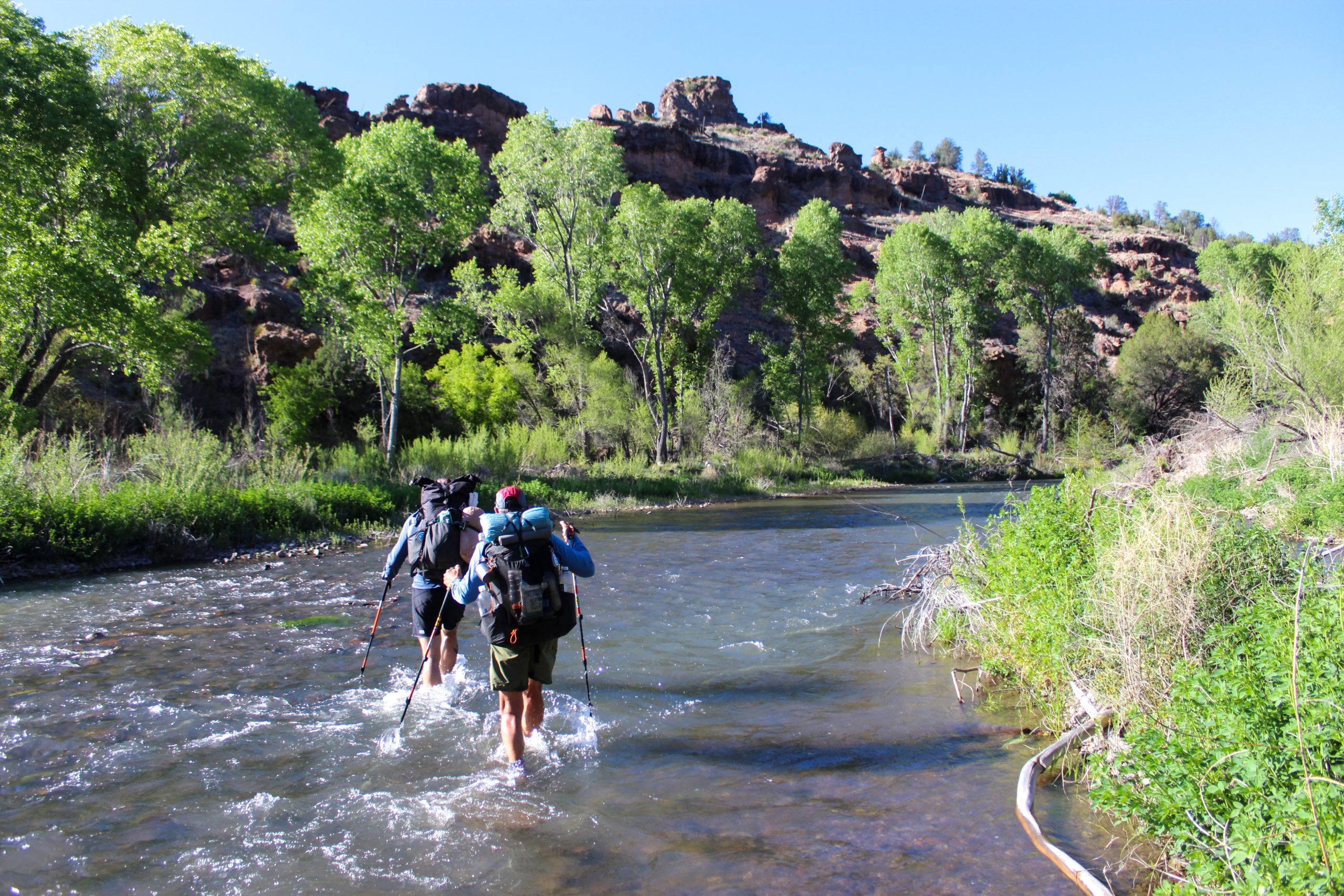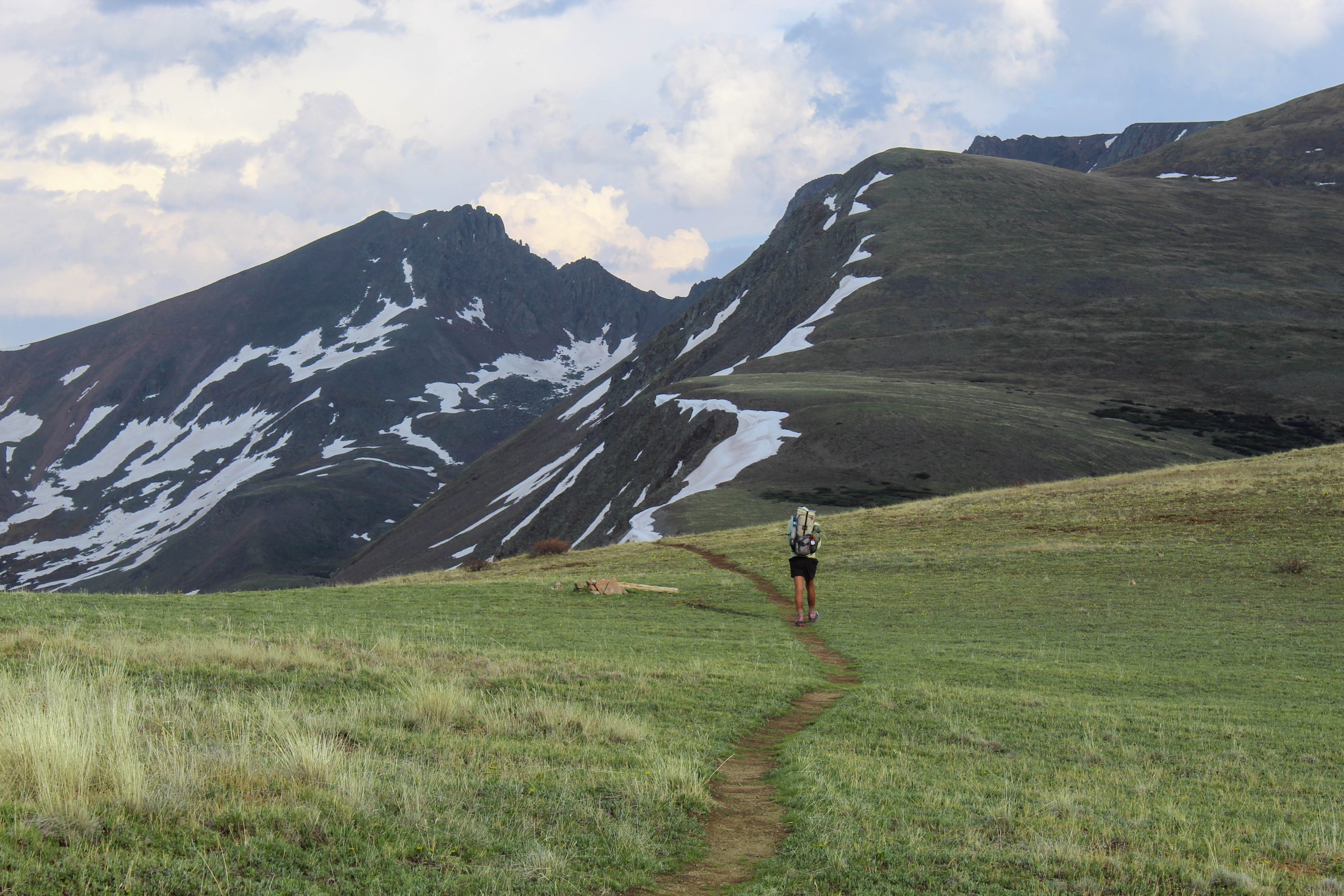Don’t Let an Injury Derail Your Thru-Hike: These 18 Simple Exercises Can Make You a Better Hiker
I‘ve been asked countless times how I’ve trained in preparation for my thru-hikes. The answer is a little complicated — I’ve never created a routine with the intent of training for a trail, but my lifestyle differed dramatically in the months before my hikes of the Colorado and Continental Divide trails.
In the weeks leading up the Colorado Trail, I trained for and ran a marathon, completed a daily physical therapy routine targeting my knee health, and went for long hikes most weekends. Before the Continental Divide Trail, all I did was ski some weekends, hike a handful of times, and tell myself that all my rest would let me hit the trail refreshed and ready to go.
It didn’t. The first few days in New Mexico felt like getting hit by a truck compared to the relatively easy start I experienced on the Colorado Trail.
Now that I’ve begun looking ahead to my next adventures, I want to be more intentional with my preparation to ease the transition into trail life and reduce my risk of a hike-ending injury. Here’s a look at exercises that will help you strengthen your body, build endurance, and prepare for the demands of thru-hiking. Each of these exercises is chosen with hikers in mind, focusing on real-world functionality and the specific needs of the trail.
I suggest trying to train around four times a week — alternating days of strength and cardio has served me well in the past and helped me stay injury-free. I prefer to fit my gym days in during the weekday to leave my weekend wide open for having fun in the mountains, but whatever works best for you and your schedule is perfect.
Ed. note: We’re not physical therapists or certified personal trainers — just hikers sharing what’s worked for us. Always consult a professional before starting a new exercise routine, especially if you have preexisting conditions or injuries. The number of reps and sets listed are just recommendations, and you should find what works best for you and your body.
Strength Training
1. Weighted Step-Ups
Recommended Reps x Sets: 15 x 3
How to Do It: Stand in front of a knee-height box or bench with a dumbbell in each hand. Step up with one foot, driving through the heel, and bring the other foot up to meet it. Step back down and repeat on the other leg.
How It Helps: This exercise mimics the repeated motion of climbing uphill with a heavy pack. By strengthening your quads, glutes, and hamstrings, it prepares you to tackle steep inclines without overtaxing your body. On the trail, you’ll notice improved endurance and stability, especially during long climbs or when navigating rocky terrain. Additionally, the balance required for this movement helps simulate the uneven footing you’ll encounter on most trails.
2. Bulgarian Split Squats
Recommended Reps x Sets: 10 x 3
How to Do It: Stand a few feet in front of a bench. Place the top of one foot on the bench behind you. Lower your body into a lunge, keeping your front knee above your ankle, then return to standing. Switch legs after completing a set.
How It Helps: Bulgarian split squats build unilateral leg strength, meaning they target each leg individually. This is crucial for hikers, as it improves balance and stability while stepping over roots and rocks. Strengthening your glutes and quads also helps protect your knees, reducing the risk of injury on long descents.
3. Single-Leg Glute Bridge
Recommended Reps x Sets: 10 x 3
How to Do It: Lie on your back with one foot flat on the floor and the other extended in the air. Push through your planted foot to lift your hips until your body forms a straight line. Lower slowly and repeat.
How It Helps: Hiking relies heavily on glute strength for both power and stability. Single-leg glute bridges target this area while also engaging your core and lower back. Strong glutes mean less strain on your lower back when carrying a pack and better propulsion on steep ascents.
4. Calf Raises
Recommended Reps x Sets: 15 x 3
How to Do It: Stand on a step with your heels hanging off the edge. Push up onto your toes, then lower your heels below the step. Use weights for added resistance.
How It Helps: Your calves play a significant role in pushing you forward, especially on inclines. Strengthening these muscles with calf raises improves endurance and reduces the risk of fatigue and cramping on long uphill sections. It also helps prevent Achilles tendon injuries, which are common among hikers.
5. Romanian Deadlift
Recommended Reps x Sets: 8 x 3
How to Do It: Hold a barbell or dumbbells in front of your thighs. With a slight bend in your knees, hinge at the hips and lower the weights along your legs, keeping your back straight. Return to standing.
How It Helps: Romanian deadlifts build strength in the hamstrings, glutes, and lower back — all essential for carrying a pack and maintaining good posture. By targeting the posterior chain, this exercise helps you handle the repetitive strain of hiking and reduces the risk of lower back pain.
6. Farmer’s Carry
Recommended Reps x Sets: 3 laps of your set distance
How to Do It: Hold heavy dumbbells or kettlebells at your sides. Walk a set distance or time while maintaining an upright posture and controlled breathing.
How It Helps: Farmer’s carries improve grip strength, core stability, and shoulder endurance. This directly translates to carrying a heavy backpack comfortably over long distances. Additionally, the exercise reinforces proper posture, which is critical for avoiding fatigue and back pain on the trail.
Cardio & Endurance
7. Incline Treadmill Walking/Running
Recommended Distance: Build up to the point where you consider a 5k to not be challenging
How to Do It: Set a treadmill to a steep incline. Walk or run at a moderate pace, focusing on maintaining a steady effort.
How It Helps: Incline treadmill walking closely replicates the effort required for uphill hiking. It builds cardiovascular endurance while strengthening the same muscles used during ascents. Incorporating intervals can also help prepare your body for the bursts of effort needed during particularly steep climbs.
8. Stair Climber
Recommended Duration: 30 minutes low intensity
How to Do It: Use a stair climber machine at a moderate pace. Keep a steady rhythm and avoid leaning too heavily on the handles (fight the urge!).
How It Helps: The stair climber strengthens quads, glutes, and calves while building endurance. It’s especially effective for training your body to handle sustained climbs, like a mountain pass. Regular use also helps simulate the repetitive motion of ascending stairs, which is similar to hiking steep trails. East Coast hikers know that, sometimes, a steep trail really is just a stair stepper straight up.
9. Weighted Vest Hikes
Recommended Distance: Build to the average distance you want to cover each day on your thru-hike
How to Do It: Wear a weighted vest and walk on a treadmill, incline trainer, or around the gym. Gradually increase the weight as you progress.
How It Helps: Wearing a weighted vest mimics the load of a fully packed backpack, conditioning your body for the additional strain. It strengthens your core, legs, and shoulders while improving overall stamina. By training with extra weight, you’ll find it easier to carry your gear on the trail.
Core Stability
10. Planks
Recommended Reps x Sets: 3 sets of 30 seconds
How to Do It: Hold a forearm or high plank position with your body in a straight line from head to heels. Engage your core and hold for as long as possible.
How It Helps: Planks build core strength and stability, which are essential for maintaining balance and reducing strain on your lower back. A strong core also improves posture and helps distribute the weight of your pack more evenly, reducing fatigue.
11. Russian Twists
Recommended Reps x Sets: 15 x 3
How to Do It: Sit on the floor with your knees bent and feet off the ground. Hold a weight or medicine ball and twist your torso side to side, tapping the weight to the floor each time.
How It Helps: Russian twists strengthen your obliques, which play a key role in rotational stability and balance. This is particularly helpful when hiking over uneven terrain or sidestepping obstacles.
On the Trail
Preparing your body for the demands of a thru-hike doesn’t stop once you get started with the hike. Here are a handful of exercises you can do in your tent each night, as well as a quick warmup before starting out each morning, that your body will thank you for.
Tent Exercises
1. Cat-Cow Stretch
Recommended Duration: 1 minute
How to Do It: On all fours, alternate between arching your back upwards (Cat) and dropping your belly while lifting your head and tailbone (Cow). Repeat slowly for 1–2 minutes.
How It Helps: Loosens up your spine and reduces stiffness after a long day of carrying a pack, helping to prevent lower back pain.
2. Kneeling Hip Flexor Stretch
Recommended Duration: 3 sets of 30 seconds each side
How to Do It: Kneel on one knee with the other foot in front, forming a 90-degree angle. Lean forward slightly until you feel a stretch in your hip flexor. Hold for 30 seconds per side.
How It Helps: Lengthens tight hip flexors caused by repetitive uphill hiking or prolonged sitting.
3. Leg Raises
Recommended Reps x Sets: 10 x 3
How to Do It: Lie on your back with your legs straight. Lift one leg slowly to a 45-degree angle, lower it, and switch legs. Do 10 – 15 reps per side.
How It Helps: Strengthens your core and hip flexors, which are key for stability and balance on uneven terrain.
4. Ankle Rolls
Recommended Reps x Sets: 15 x 2
How to Do It: Sit in your tent and rotate each ankle slowly in both directions for 30 seconds.
How It Helps: Improves ankle mobility and reduces stiffness, lowering the risk of sprains or strains.
Morning Warm-up
5. Dynamic Lunges
Recommended Reps x Sets: 10 x 3
How to Do It: Step forward into a lunge, reaching your arms overhead, then push back to standing. Alternate legs for 8–10 reps.
How It Helps: Warms up your legs and stretches your hip flexors, preparing your body for the day’s mileage.
6. Arm Circles
Recommended Reps x Sets: 10 x 3
How to Do It: Stand with your arms extended and make small, controlled circles, gradually increasing their size. Reverse direction after 30 seconds.
How It Helps: Loosens shoulder muscles, which can become tight from using trekking poles or carrying a pack.
7. Toe Touches
Recommended Reps x Sets: 10 x 2
How to Do It: Stand tall, hinge at the hips, and reach for your toes without rounding your back. Hold for a few seconds and return to standing.
How It Helps: Stretches your hamstrings and back, reducing stiffness and preparing your lower body for movement.
Final Thoughts
These exercises take only a few minutes but make a significant difference over time. Almost all of them are pulled from physical therapy routines I’ve gone through after getting injured on long hikes. Learn from my mistakes and be more proactive with your stretching and strengthening routine to help avoid the frustrating process of healing from injury!
Preparing for a thru-hike doesn’t have to be an overwhelming process. You don’t need to run a marathon or get absolutely shredded to find success on trail. That being said, doing more than standing up from your couch and heading out on the trail will only serve to help you mentally and physically.
By incorporating these exercises into your routine, you can build the strength, endurance, and stability needed for the smoothest possible transition. Think of it as investing in your body to make the journey more enjoyable, less painful, and ultimately safer. The effort you put in now will pay dividends on your hike. The trail will always have its challenges, but with intentional preparation, you’ll be ready to take them on, one step at a time!
Featured image: Graphic design by Zack Goldmann.
This website contains affiliate links, which means The Trek may receive a percentage of any product or service you purchase using the links in the articles or advertisements. The buyer pays the same price as they would otherwise, and your purchase helps to support The Trek's ongoing goal to serve you quality backpacking advice and information. Thanks for your support!
To learn more, please visit the About This Site page.

 ">
">




Comments 3
A concise collection of exercises; thanks! I would suggest instead of using a weighted vest, wear/carry your packed backpack for all hikes and walks. Often called “rucking,” there is nothing like carrying a loaded pack to train for carrying a loaded pack. In the Army, we would say “train like you plan to fight;” I adapt that to be, “train like you plan to hike.”
Awesome collection. Exactly what I need to improve my hikes.
Plus clam and reverse clam especially…..killer for IT band stretch. If you have any issues with discs bulging or vertebrae narrowing in your upper body, or neck, talk to a PT before doing farmer carry, lots of ways to strengthen that part of your body without compressing discs further.